It’s an old passion, the love of old stones, already set in before my first decade on planet earth. My memory tells me it had something to do with Saturday afternoon drives along Cheshire lanes and mother announcing that the unusual row of cairns along one such lane were the ancient Celtic graves of sacrificed virgins. Sometimes she could be most unsuitable. The story wasn’t true anyway, but it sparked a yen for things prehistoric.
Mitchell’s Fold Bronze Age Stone Circle, Shropshire
*
My second decade thus found me sitting in the basement lecture rooms of Sheffield University Arts Tower, looking at slide shows of standing stones, cairns, cists and chambered tombs, the subjects frequently screened upside down. The lecturers in the small Prehistory Department, couldn’t seem to fathom the loading of the slide carousel (it became a standing joke). And then they didn’t seem to think it mattered which way up we looked at things.
They were probably right. After all, there is very little one can say about these ancient structures and configurations. We might be able to hazard a date for their construction from some excavated artefact found nearby. And we know that tombs were tombs from the human remains found within them.
We also know that these sites must have been hugely important to the people who constructed them. (Think physical effort needed to heft the stones; antler picks and stone axes the only available technology). And then there is the siting of the monuments which, in nearly all cases, strongly suggests pre-literate humanity’s elemental connection with landscape. Place had MEANING; all of it doubtless sacred in ways we no longer grasp.
But when it comes to knowing who the people were, and how they lived and what they believed – the rituals and customs honoured over generations – then the stones remain stonily silent.
And I think that’s what I like about them. They are mysterious. Utterly mysterious.
Here’s another photo of The Hurlers stone circles on Bodmin Moor, Cornwall. (The obvious mystery here being who or what is that seeming pendant figure on the horizon?) The Hurlers are said to date from the late Neolithic, early Bronze Age (so around 2,500 BCE) and they are unique in that the site comprises three perfect circles set in a row. (Impossible to photograph without a drone). But that’s not all. 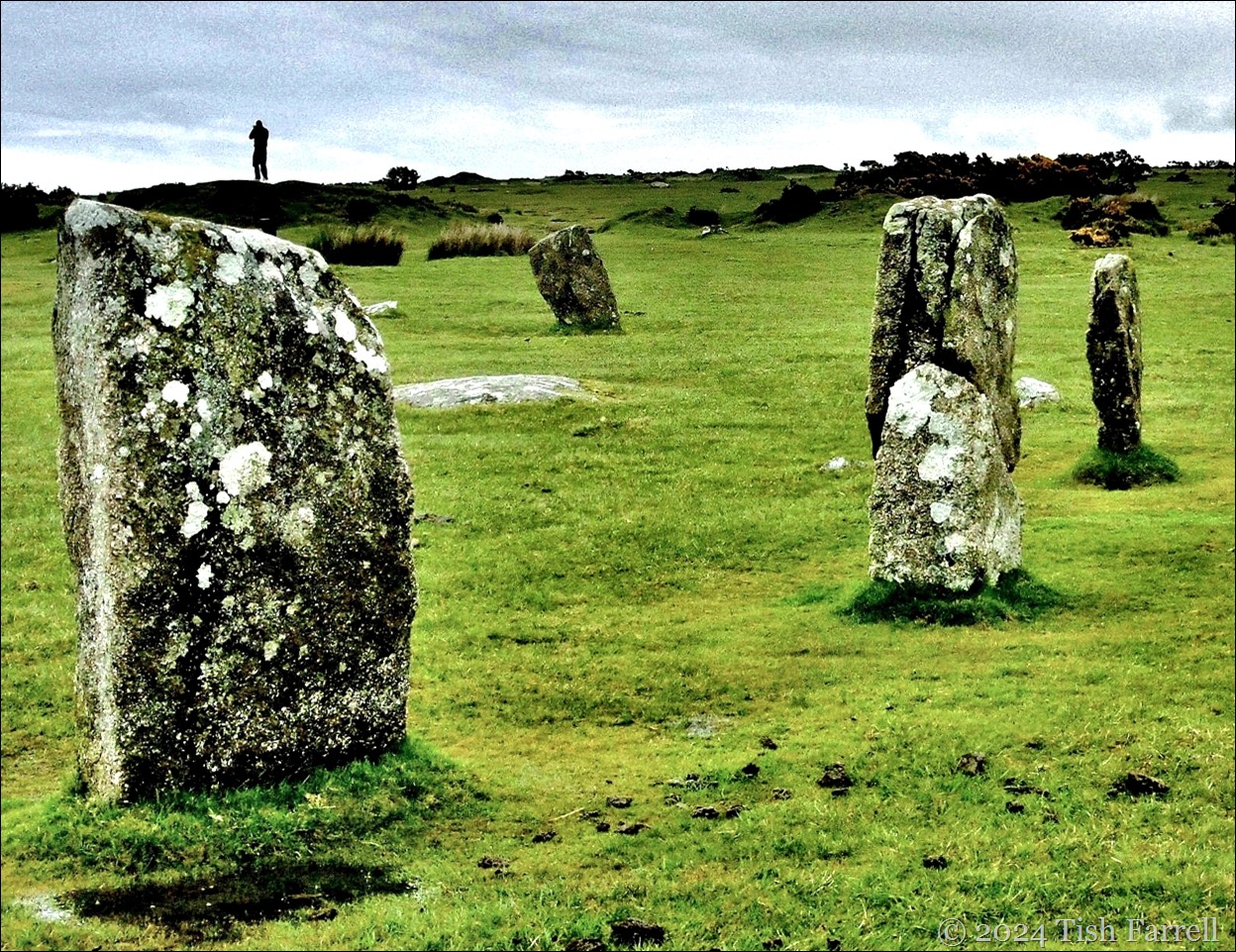
*
The circles line up with a striking natural feature – the Cheesewring granite tor (Keuswask in Cornish), which of course makes one wonder if it somehow featured in the circle ceremonies, if only as a beacon site to gather in communities from across the moor.
*
In Pembrokeshire, West Wales, there are numerous megalithic sites. One of the most striking is Pentre Ifan chambered (dolmen) tomb c. 3,500 BCE. The capstone is seventeen feet long and thought to weigh around 16 tons.
*
The finished tomb would have been covered with a huge mound of stone and earth, and the whole constructed in sight of the sea and Mynydd Carningli (Mount of Angels).
You can read more about Pentre Ifan in a previous post HERE.
Lens-Artists: Rock Your World This week Donna sets the theme with photos of some fabulous rocky subjects. Go see!


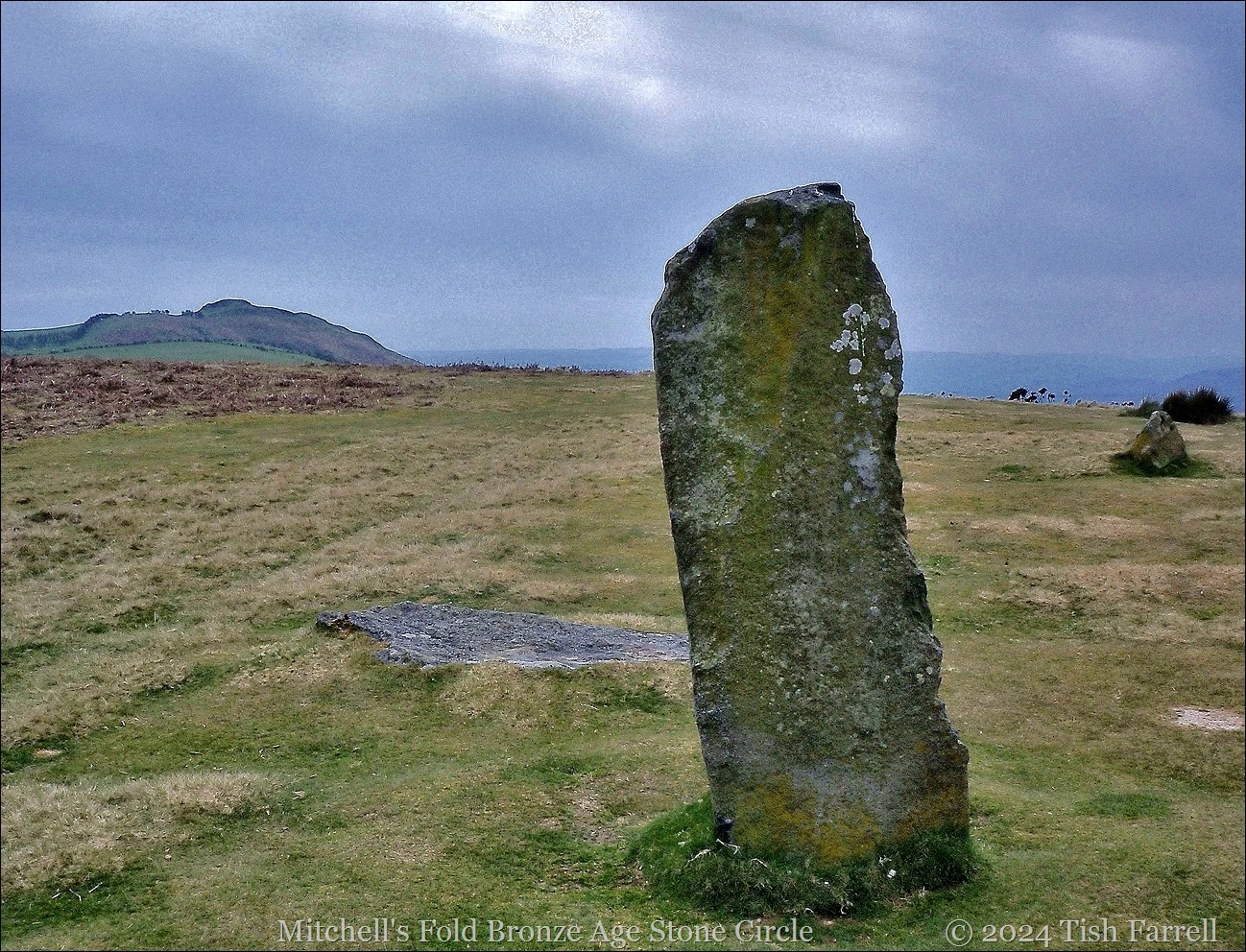
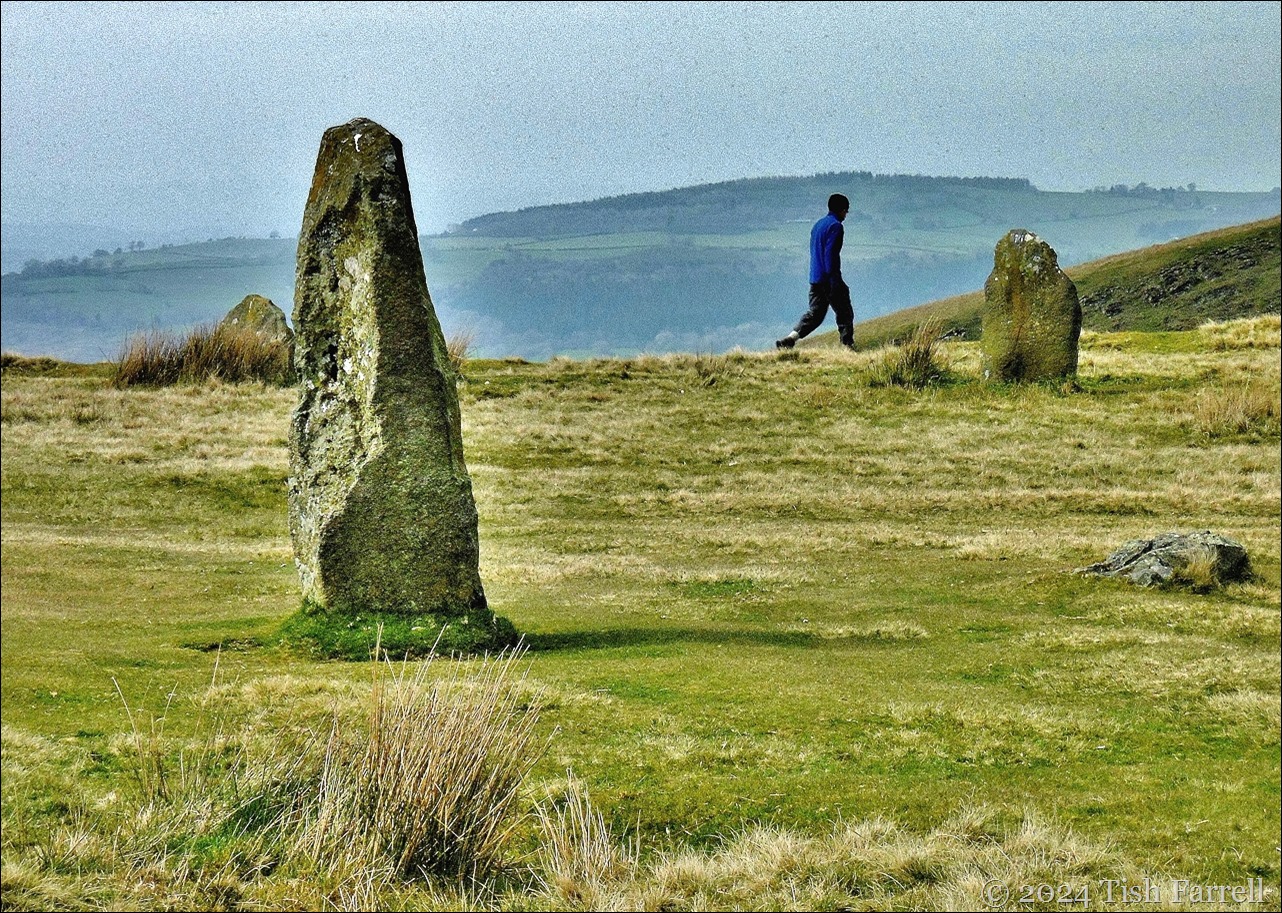
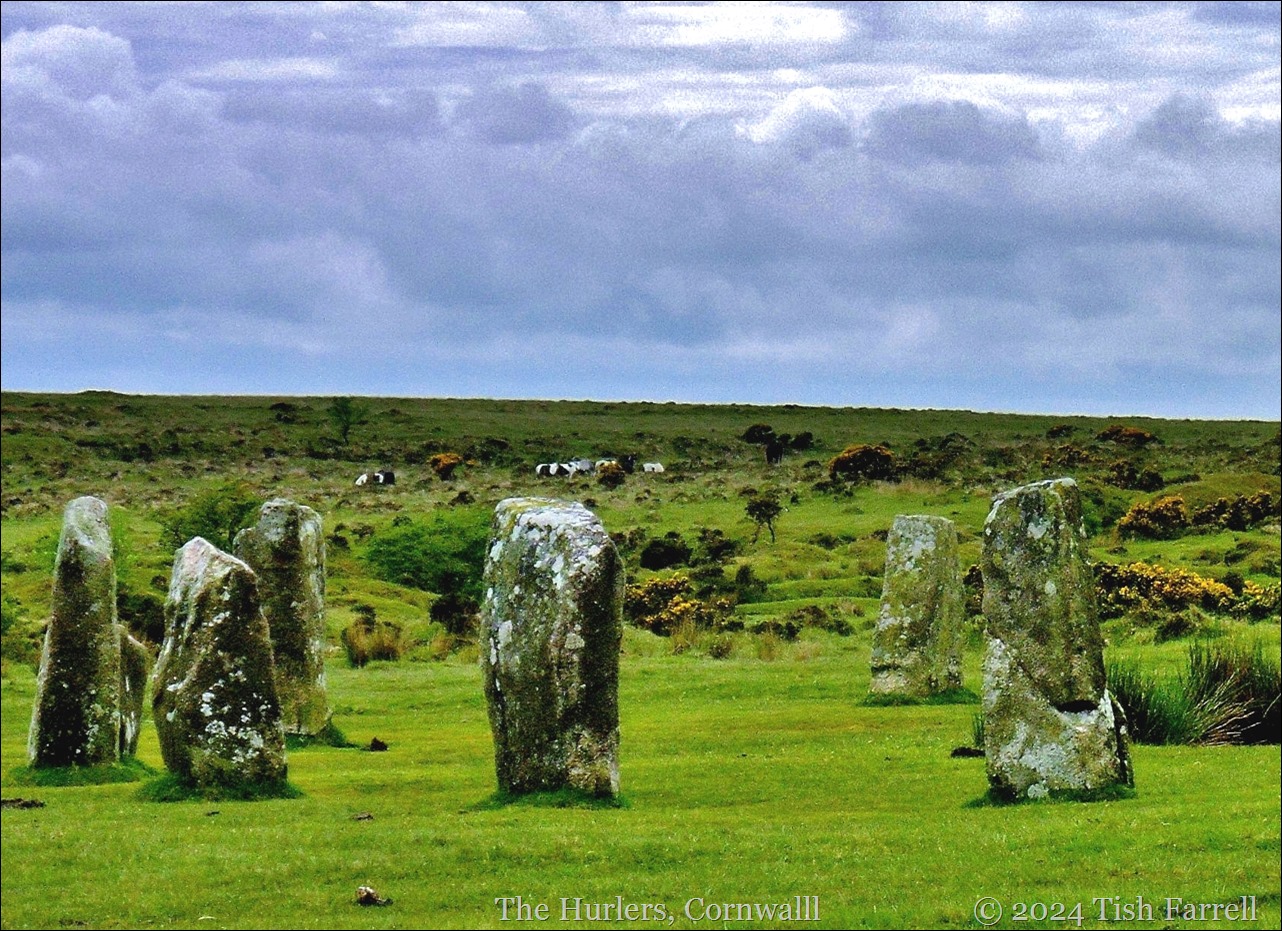
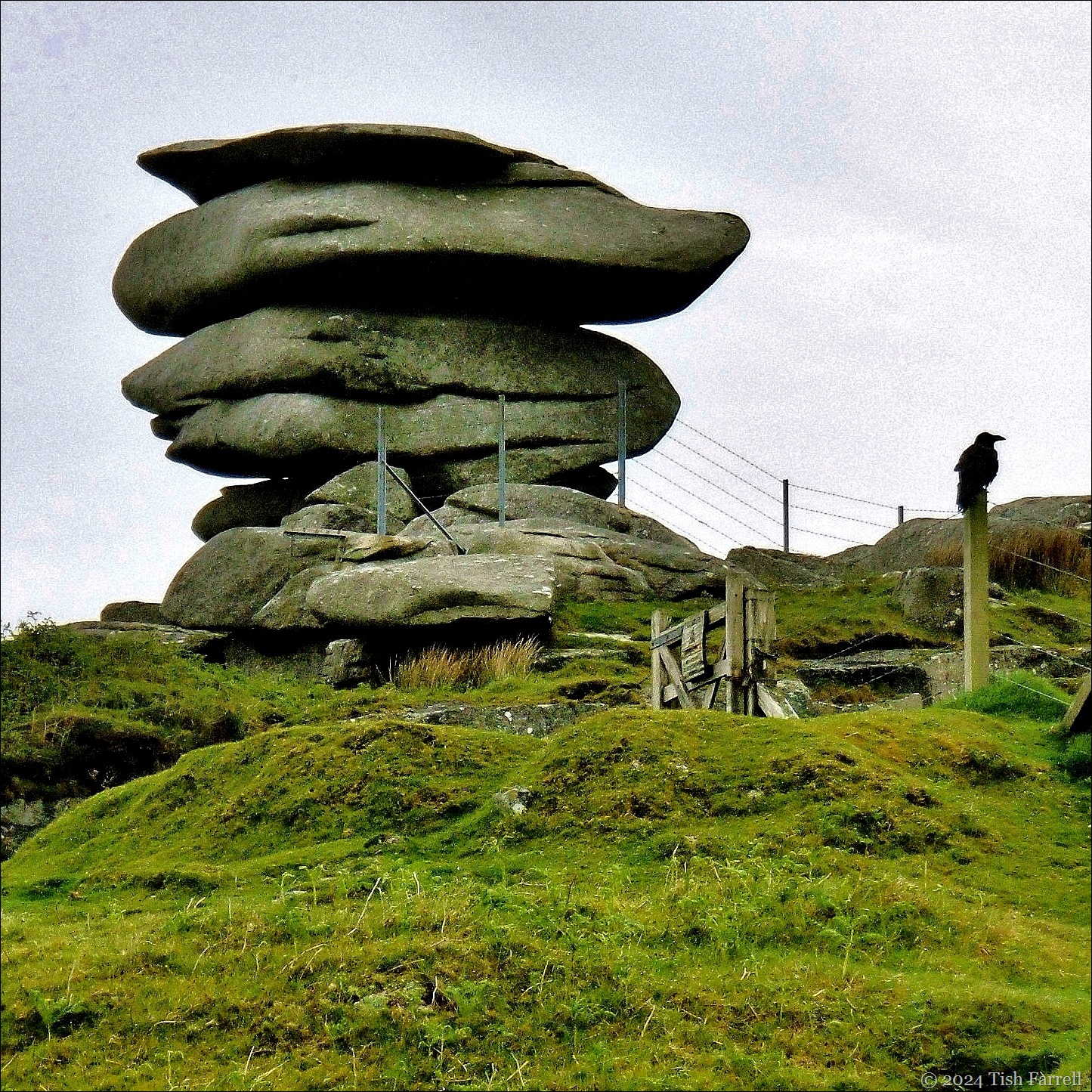
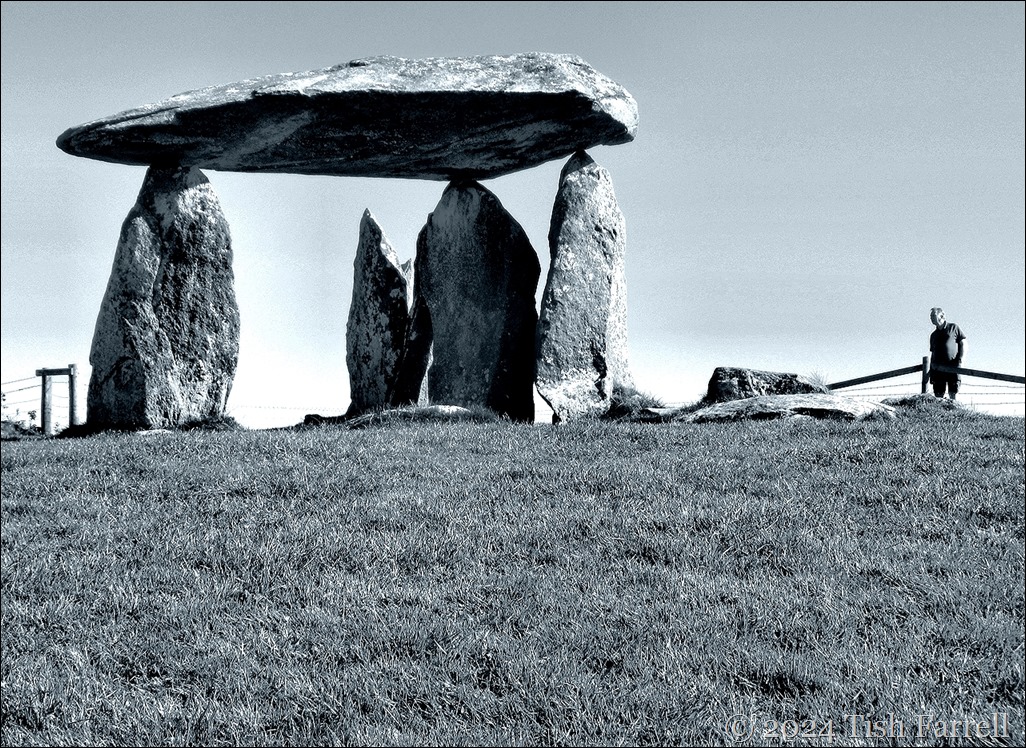
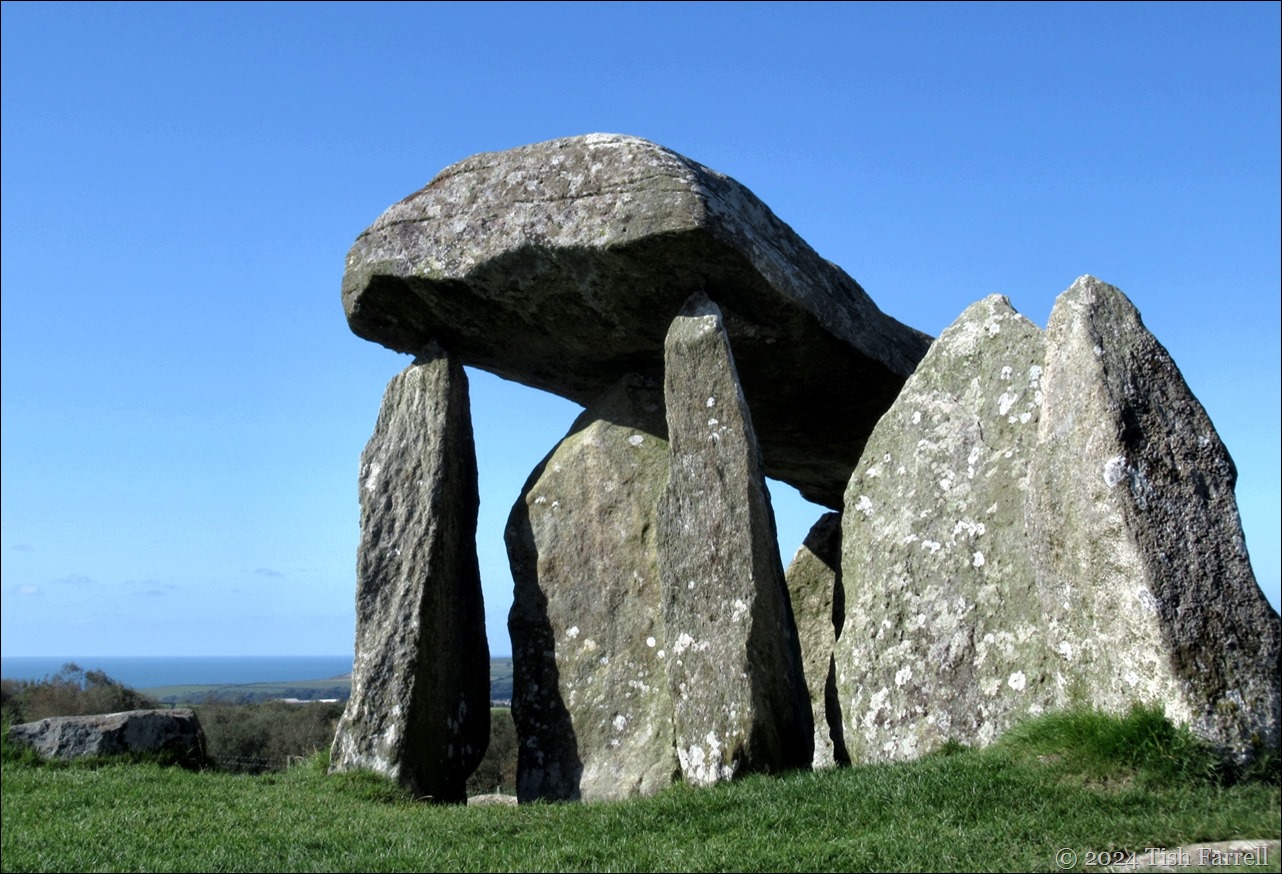
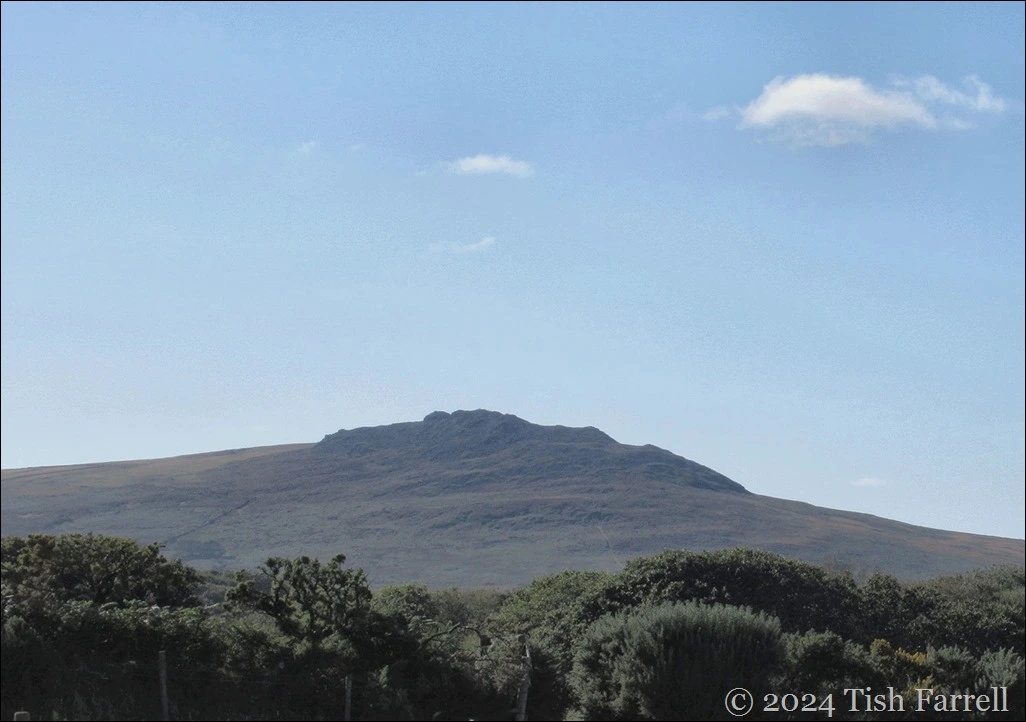
How amazing Tish! You just have to marvel at the result and imagine how it was done. Great choice for this challenge and well photographed.
Many thanks, Anne.
😊
They are extraordinary. I always look at them in awe – thinking how first, and eventually why.
Actually there is one I no longer look at in awe as I was too busy getting annoyed with all the people slowing down to look at it from their cars when all I wanted to do was get from A to B!
PS btw a fabulous post
It’s impossible not to slow down as you pass. No matter how many times.
Oh no you’re one of those!! I’m sadly not having driven past weekly for over a year.
*pass 🤦♀️
Well I only slow down because everyone else does, but if it is the first time you drive past you can’t help look. You must be relieved now that you no longer have to drive that route.
I know I know, I really should be more patient with them, but you are so right I am so pleased I don’t have to do this anymore
I know how how you felt about that particular view, Becky. We had a phase of having to get from A to B there too. V. annoying.
This is amazing, Tish.
And I think I agree with your pre-history tutors. Upside down no matter.
Like minds, Mak.
I always wonder how the ancients lifted those huge rocks.
Yes, that is a big mystery too. There have been lots of experimental archaeology projects, using tree-trunk rollers, and ropes and an awful lot of people! But one is still left awestruck by the effort needed.
Indeed!
Great post, Tish. These are definitely intriguing and beautiful!
Many thanks, Egidio. Happy to intrigue…
Wow!
These rocks are certainly wonderful. An amazing glimpse into the past.
Many thanks, Hammad 🙂
While I can’t say I have a love of old stones I still enjoy listening to Mick Jagger and Keith Richards.
😊
Oh, yes, yes, yes. Ark. Especially the really old Stones – I’m a king bee; Under the boardwalk.
We are learning so much but there are still a lot of unanswered questions about our past.Hope we live long enough to find out
Definitely a lot still to learn, Beverly.
Amazing!
I had a smirk at the memory of those projectors, Tish. It took half a lesson to get them working as intended. Standing stones aren’t a passion of mine, but it’s extraordinary how far they date back and how many of them there are, so there’s very definitely a purpose. A couple of friends here are determined to hunt down every last one in Portugal (and Spain!)
Stone searching in Portugal and Spain – that will be some enterprise, Jo. And actually it’s one way to organize your travel plans! Taking you to unexpected quarters, which may well be spectacular locations.
🤗🩷
So much to learn and always more to discover with you Tish. The megalithic sites are truly remarkable and we will most likely never know all the answers, but maybe that IS the allure. That said, you certainly gave us food for thought. I can’t even image the work it would take to move the stones, I often think of that in old ruins on cliffs her in my part of the world. And yet…those lecturers can’t even figure out a slide. lol. Good thing they weren’t in charge…in the day.
Oh, that’s so funny, Donna, ‘ Good thing they weren’t in charge…in the day.’ That’s rather thrown my whole degree course into an interesting perspective too 🙂
So pleased you enjoyed this post.
There is definitely something about being among really old stones. I don’t really think about the why or the what, but I always feel a sense of calmness when near them.
That’s a very interesting response, Jude. There’s a sense of communing which is always soothing. I was once in Carnac, Brittany when there was entire weekend celebration of their amazing standing stone avenue, concluding with a candlelit procession from the town church and out to the stones. Where they then had a firework display which wasn’t quite so peaceful, but visually rather fabulous, lighting up the stones.
I am glad you highlighted how important the site must have been to those the erected the stones. Sometimes that reason remains a mystery.
Thanks, Flower. I think it’s pretty likely that location is key. Often it seems stones were hauled huge distances. E.g. the blue stones of Stonehenge were transported 180 miles from Preseli, West Wales. There is further evidence that before relocation, they had been used to form a henge in Wales. Astonishing stuff.
Wowza Tish – what an amazing subject for the week! One wonders about their stories yet is grateful there are still unsolved mysteries out there. Laughed at the slide project debacle!
Many thanks, Tina. And yes, plenty of mysteries to keep us fascinated.
Love, love, love, Tish. History is one of my interests and this sort of thing nos something I really enjoy. I remember seeing Stonehenge for the first time, years ago when you could still walk among the stones. It was magical.
I remember walking among the stones at Stonehenge too, Janet. What a thrill.
First, in the the Cheesewring granite tor (Keuswask) — do I spay a raven waiting by the pile of stones? Unless he is your raven, he’s the perfect bird.
At moments like this, I very much wish I were over there enjoying the stones personally. While there, I saw as many of them as I could including a few not listed anywhere and one where it had been converted to a circle honoring Mary. Stonehenge was gated off those years (1979), but Glastonbury Tor and Avebury took my breath away.
Great pictures, but even better, a great story. I do love archaeology and prehistory. I don’t even know when I fell in love with it. I think I read a book about ancient Greece by Mary Renault when I was maybe 8 or 9 and then read anything else I could get my hands on. It was probably the unspoken reason for going to Israel where everything was ancient — and before they made everything “safe” for tourists. You could still actually go down into a site and look around and enjoy it before they moved all the interesting stuff to museums. Ah, but England they leave the stones. I suppose they are a bit big to carry off to any museum. Aren’t you lucky that your history has stayed put for you.
Great post
Ah, Mary Renault – there’s a writer who did good conjuring. As to the bird on the fence by the Cheesewring, I think it’s a rook. It would have been v. special if it had been a raven, but I was anyway pleased that it posed there just then.
I take your point about ancient sites simply being left and ‘unmanicured’. There are quite a number like that around the UK, and it then becomes an adventure to actually find them. Years ago when I was in Brittany, I was amused to spot the master stones of a probably Bronze Age cromlech utilised as the mainframe of a farm shed. And then to find a medieval church, sitting right on top of a Neolithic chamber tomb, which was then serving as the crypt.
Glad you like the post.
I loved it. Thank you!
These standing stones are indeed evocative and mysterious, and still exist in unfeasibly large numbers. They must have cast their spell throughout the ages to have remained so often intact. A great post.
It’s amazing how many stones and circles there are across the UK – mapping the landscapes in ways now unfathomable to us. Even if we don’t understand their purposes, they do give the psyche a tweak, which is always beneficial – jogging us out of ‘everyday’ mindsets.
Exactly. They invite reflection as well as paying even more attention to the surrounding landscape.
A really interesting post, Tish! You’ve truly met the challenge this week with your photo set!
Many thanks, John.
Hi Tish,
Thank you for this article on megaliths… I loved every image you shared with us, and the different names. In your travels to Africa, did you ever encounter any?
Hi Dr. Y. No, I didn’t see any megaliths in Africa. Your blog post about the numerous ones in Senegal/Gambia is fascinating.
A while back, I wrote about the Senegal/Gambian Ancient Civilization: the Senegambian Stone Circles, the megaliths in Senegal
Many thanks for this link to your fascinating post, Dr. Y. You have certainly taught me something. So many stone circles. I had no idea.
Yes… the world is so full of them…. some in hidden places, others in not so hidden ones 🙂
My interpretation (and I am very ignorant of these things) is that Oedipus walks into the afterlife through some megalothic structure in “Oedipus at Colonus.”
That’s an intriguing observation. Thanks.
Sure thing.
what lovely descriptions you write! I recognise many of these places and it is lovely to remember my times there!
Thank you for that lovely comment, Cora. Hope all is well with you.
Fascinating!
Thanks, Jennie.
You’re welcome.
There’s an unexplainable feeling in places like these, I always feel so small. Your photos are amazing, Tish. I’m glad to see a post on megaliths.
Many thanks for those thoughts, Sofia. Much appreciated.
Our ancestore were masters of hands-on architecture. 🙂
I like that: hands-on master architects. Which also makes me think of how important was the hand-brain-doing dynamic to human development. Some might say we have a bit of deficit on that front these days.
They’re so fascinating – so ancient and mysterious. They are an example of why I chose to study the ancient cultures in Art History in high school (when I could have chosen and other period). How can we ever be sure about what we think we “know” about them. Pentre Ifan is truly mind boggling. How did they ever get that capstone up there?!
Alison
Mind boggling it is, Alison. It makes one realize how far away we are from understanding how our ancestors went about things. But on other hand, we can recognize the determination of their intentions if not the reasons behind them.
Intriguing post, Tish. Megalithic sites are fascinating and a good subject for photography.
I agree, Dina. Megaliths do like the camera 🙂
Gosh that one with the capstone at the end is stunning, I’ve never seen any like that. We saw a fair bit, but mostly on Orkney island, when we looked at those standing stones. Funny story about the projectors, that standing joke as you say. Captivating, makes me want to see more!
I’ve never made it to Orkney. You’ve reminded me I need to go. Lots of amazing prehistoric remains, including some sort of huge temple site that prompted archaeologists to suggest it was an important European centre, rather than a remote quarter of the British Isles. Perhaps coincided with one of the many periods when the climate was much warmer than it is today.